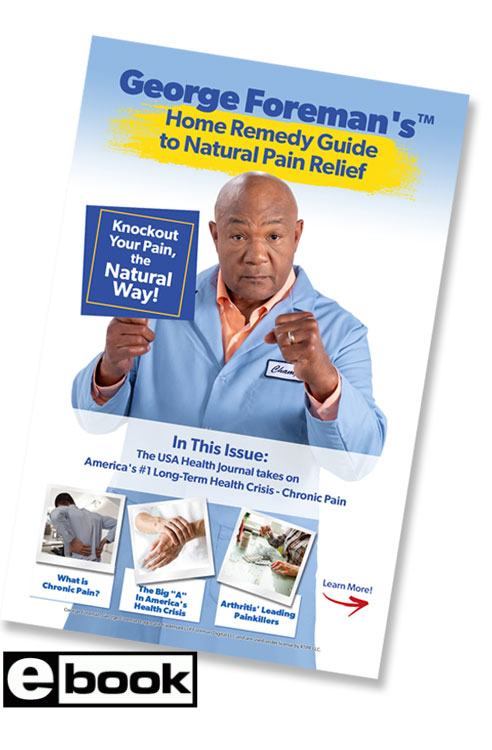18 Interesting Facts About Painkillers
If you are an existing Real Time Pain Relief Retail Customer, simply activate your account by resetting your password on the NEW SITE, Click Here!
18 Interesting Facts About Painkillers
Pain is a sensation we all know too well. From the ache of teething as a baby to the acute agony of a wound, to the chronic ache of arthritis, pain comes in all forms.
Naturally, as innovative people strive to lessen the discomfort of life in a tender, physical body, we have developed a fix: Pills. Painkillers. Analgesics. Call it what you will, it is a multi-billion dollar industry that has afforded people both incredible, life-serving relief from debilitating pain and has also created a culture dependent on the reprieve from suffering that a pill can offer.
The story of painkillers is as nuanced as the pain we are capable of feeling. We’ve gathered up some of the most interesting and need to know facts so you can be well-informed on one of the most taken-for-granted medicines available to us.
#1) Three in Five Americans Have Used a Non-prescription Medication in the Past 6 Months and of that 78% Were Painkillers
More than 2.5 billion dollars are spent on non-prescription painkillers each year and roughly 8 in 10 Americans routinely use over-the-counter (OTC) painkillers. Whether for backaches, head aches or sore muscles, people do not hesitate to reach for pain relief.
However, problems can arise when people ignore dosage labels, leading to all kinds of physical complications. Studies indicate that there is widespread overuse of OTC painkillers in America.
#2) NSAIDS Can Lead to Higher Risk of Heart Attack
NSAIDS work by blocking chemicals known as prostaglandins, which cause swelling and pain in response to various conditions in the body such as an injury. However, since prostaglandins are also responsible for a healthy cardiac system, blocking them can lead to an increased risk of adverse heart conditions, such as a heart attack or stroke.
Long term use of NSAIDS can increase blood pressure and should be avoided if you have hypertension.
#3) Overuse of NSAIDS Can Cause Stomach Bleeding
NSAIDS are hard on the stomach and gastrointestinal tract and can cause bleeding and ulcers when overused. They are also hard on the liver and esophagus. A national poll by the American Gastroenterological Association found that on average gastroenterologists see nearly two patients per week for complications from over-the-counter pain pills.
#4) Painkillers Can Damage Your Kidneys
High doses of painkillers on a regular basis can lead to temporary or permanent kidney failure. This is because the kidneys must process all of the consumed painkillers, which can have a damaging effect on kidney tissue and structures. To relieve the stress on your kidneys, drink plenty of water when taking pain medication and avoid alcohol.
Experts say that consuming painkillers for 10 days is the maximum amount of consistent use that they can be consumed without causing kidney issues. If your pain lasts longer than 10 days, you should consult with a healthcare practitioner.
#5) The U.S. Contains Only 4.6% of the World’s Population but Consumes 80% of the World’s Opiates.
It’s no secret that there is a huge opium epidemic hitting communities across America. The National Institute for Drug Abuse estimates that 2.1 million people in the US are currently suffering from an opioid painkiller addiction. While opiates are excellent for pain relief, they are highly addictive and when abused are deeply damaging to health, up to and including death.
#6) More Americans Die Every Day from Drug Overdoses Than from Car Crashes. The Majority of Those Deaths Involve Legal Prescription Drugs.
Prescription drugs are the most abused category of drugs in the US. In 2007 at least 12,000 Americans died from prescription pain relievers. In 2014 28,000 people died from opiate overdose, half of which were prescribed. The number of deaths continues to grow every year.
#7) The Original Aspirin Recipe Used Willow Bark
In fact, most medications were originally—or still are—derived from plants. Many of the plants with the most effective chemicals have since been synthesized in labs. Pain medications are no exception. Both Willow and Meadowsweet—as well as other plants— contain the precursor for salicylic acid, which is the chemical that is so effective at reducing pain in humans.
In fact, Willow bark has been used since ancient times (it’s conjectured since about 3000 BC!) to treat pain. It wasn’t until the 1800s that Joseph Buchner effectively extracted the active ingredient and called it Salacin. Then, in 1853, Charles Frederic Gerhardt succeeded in chemically synthesizing the structure of salicylic acid.
In 1897 Bayer created Aspirin by combining salicylic acid with an acetyl group which effectively diminishes the irritating side-effects of taking salacin directly. The name aspirin actually comes from the combination of A for acetyl group and “spir” from the latin name for the naturally salicylic acid- containing Meadowsweet, Spiraea ulmaria.
#8) Aspirin is the Only Painkiller Known to Reduce Chances of Heart Attack
In addition to relieving pain, aspirin also thins the blood, slowing the clotting action. Individuals who are at risk of heart problems, can develop blood clots that can stop blood flow to the heart, causing heart attack or stroke. Low dose aspirin therapy is a common treatment. In these low doses, it is unlikely to damage your kidneys.
#9) Athletes are at Risk of Becoming Abusers of Painkillers
Athletes are known for pushing themselves in remarkable ways on the field or court. But while they may accomplish extraordinary feats of the body, it can often be at a cost. Pushing hard often leads to injury and pain, which is why this group tends to be susceptible to overuse of pain pills. Painkillers can help athletes push through discomfort while remaining just as active.
The problem with this line of reasoning is of course that overuse of pain medications is hard on the liver and kidneys. Also, covering the pain instead of letting the injury heal can lead to further injury. If pain exists it is often due to swelling which is a cry from the body for some rest and time to recuperate.
#10) Americans Spend $50 Billion a Year on Back Pain Relief
Back pain is the most common type of pain condition reported in America and one of the primary conditions for which sufferers require painkillers. Headaches are the next most cited pain.
#11) Painkillers Can Impair Your Ability to Drive
Did you know that it is recommended to avoid driving for a few days after starting a medication or increasing your dosage? This is because certain medications can cause dizziness, nausea, sleepiness, blurred vision, inability to focus or pay attention, and fainting. After this evaluation time, you should know how the medication affects you and whether it is unsafe to operate a vehicle or not.
#12) Smokers Need to Take More Medication Than Those Who Don’t Smoke in Order to get the Same Relief
Unfortunately for smokers, it turns out that in addition to all the other risks associated with smoking, it also interferes with pain medication. Smokers require more over-the-counter and prescription painkillers than their non-smoking equivalent. Smokers are also 3 times more likely to suffer from back pain thanks to the fact that tobacco impairs the delivery of nutrient flow to the discs of the spine, which can cause degeneration.
#13) Opiates Are Inspired by the Poppy Plant
Just as Aspirin originally comes from Willow, the original opiate came from the Poppy plant, in the form of opium. After scoring the plant and collecting the latex that bleeds from the immature seed pod and stems, opium was smoked.
Later, the process of creating Laudanum, or Opium Tincture was developed. It was the primary pain medication and was used for just about everything in the 1600s until the 20th century when the addictive quality came under scrutiny and it was removed from the market. Effective though it was, it had the unpleasant side effect of delusional dreams.
#14) There are 3 Classifications of Opiates
Natural opium derivatives like Morphine come entirely from the Poppy plant.
Partially synthetic opiates are like they sound: part natural and part synthesized. They include heroin, oxycodone and oxymorphone.
The last classification is the completely synthetic derivatives such as codeine, fentanyl and methadone.
#15) Heroin was Originally Developed to Help with Morphine Addiction
Actually, Morphine was developed to help wean people off of opium addiction, not realizing that morphine addiction would become the next big problem. Ironically, heroin was then developed to help wean people off of morphine addiction. The problem was that each subsequent drug was more euphoric and addictive than the last. It wasn’t long before heroin was classified as an illegal drug in the US.
#16) There are 2 Primary Types of Over-the-Counter Painkillers
Of the over-the-counter pain pills available, there are two primary types which work in different ways. They include: Analgesics and NSAIDS (Non-steroidal anti-inflammatory drugs).
Analgesics include Acetaminophen—of which Tylenol and Paracetamol are brand names—and Aspirin. They help to control pain by blocking or manipulating pain signals sent to the brain but do not alter sensory perceptions or consciousness. They can also help to reduce fever.
NSAIDS include drugs such as Ibuprofen (brand names include Advil and Motrin) and naproxen sodium (such as Aleve). They can work by decreasing the production of pro-inflammatory chemicals known as prostaglandins, thus reducing both pain and swelling.
Some painkillers will utilize a combination of painkilling chemicals—such as acetaminophen, aspirin and caffeine.
#17) Prescribed Pain Killing Medications Include Opioids, Steroids, and Benzodiazepines
Opioids, also known as narcotic analgesics, work on opioid receptors found in the brain and spinal cord and help to block pain and make you feel calm and happy.
Steroids decrease inflammation and thus any pain associated with inflammation.
Benzodiazepines are sometimes prescribed in cases where the psychological aspect of pain is especially severe, causing anxiety. It is also a muscle relaxant and can thus help relieve muscle pain. Use of benzodiazepines for pain are highly controversial due to their addictive nature and unclear evidence as to the actual benefit as they relate to pain.
#18) Women Are Less Likely to be Given Painkillers Even Though They Experience More Pain
Scientific America reported on one study that indicates women experience pain more intensely than men. However, multiple studies and reports indicate that doctors are less likely to take complaints of pain from women seriously. For example, one researcher found that women were more likely to receive sedatives instead of pain killers even when exhibiting identical symptoms for the same ailment as a man (who is more likely to receive painkillers).
Do You Have a Painkiller Exit Plan? (Click Here to Learn How!)
Here are 7 reasons to Love Pain Relief Bath Bombs!
Here are 3 Reasons to Use Menthol for Pain Relief!
Check out our articles and infographics to learn a multitude of ways to start relieving your pain naturally!
Real Time Pain Relief not only cares about the quality ingredients that go into each and every one of our products – but also about the people who buy them. We hope this blog becomes a valued resource for your own personal journey to better health. For 20 years, Real Time Pain Relief has provided family safe pain relief infused with Nature’s Ingredients. From the useful information in our articles to our high-quality products, we hope you feel better and pass it on!
Sources:
- https://www.ncbi.nlm.nih.gov/pmc/articles/PMC3445194/
- https://www.everydayhealth.com/pain-management/6-surprising-sideeffects-of-over-the-counter-painkillers.aspx
- https://www.statnews.com/2017/10/09/pain-medication-over-the-counter/
- https://www.nbcnews.com/storyline/americas-heroin-epidemic/americans-are-abusing-over-counter-drugs-well-opioids-study-shows-n846401
- https://www.health.harvard.edu/blog/fda-strengthens-warning-that-nsaids-increase-heart-attack-and-stroke-risk-201507138138
- https://www.statnews.com/2017/10/09/pain-medication-over-the-counter/
- https://www.kidney.org/atoz/content/painmeds_analgesics
- https://www.kidney.org/blog/kidney-cars/kidneys-and-pain-killers
- https://www.ncbi.nlm.nih.gov/pubmed/18443641
- https://www.bbc.com/news/world-us-canada-41701718
- https://votesmart.org/public-statement/1205783/slaughter-marks-national-drug-take-back-day-and-announces-introduction-of-bill-to-tackle-opioid-addicti...
- https://www.cdc.gov/mmwr/preview/mmwrhtml/mm6450a3.htm
- https://drugabuse.com/library/painkiller-overdose/
- https://www.drugabuse.gov/publications/research-reports/medications-to-treat-opioid-addiction/overview
- https://www.fda.gov/drugs/resourcesforyou/consumers/questionsanswers/ucm071879.htm
- https://www.nhs.uk/medicines/low-dose-aspirin/
- https://www.pharmaceutical-journal.com/news-and-analysis/infographics/a-history-of-aspirin/20066661.article?firstPass=false
- https://www.deamuseum.org/ccp/opium/history.html
- https://www.ncbi.nlm.nih.gov/pmc/articles/PMC3445194/
- https://health.clevelandclinic.org/can-over-the-counter-pain-relievers-help-you-power-through-workouts/
- http://time.com/36242/lower-back-pain-is-no-1-cause-of-disability-worldwide/
- https://www.fda.gov/downloads/Drugs/ResourcesForYou/UCM163779.pdf
- https://www.everydayhealth.com/pain-management/chronic-pain-and-smoking.aspx
- https://health.clevelandclinic.org/why-smoking-will-worsen-your-chronic-pain/
- https://www.nhs.uk/news/lifestyle-and-exercise/smoking-increases-risk-of-chronic-back-pain/
- https://teens.drugabuse.gov/blog/post/real-teens-ask-what-are-different-types-opioids-0
- https://www.narconon.org/drug-information/heroin-history.html
- https://talbottcampus.com/4-surprising-facts-about-morphine-addiction/
- https://www.medicinenet.com/nonsteroidal_anti-inflammatory_drugs_and_ulcers/article.htm#what_are_the_side_effects_of_nsaids
- https://www.webmd.com/pain-management/guide/pain-relievers#1
- https://www.sciencedirect.com/science/article/pii/0304395994902178
- https://www.ncbi.nlm.nih.gov/pubmed/7531735
- https://www.scientificamerican.com/article/women-feel-pain-more-intensely/
- https://www.health.harvard.edu/blog/women-and-pain-disparities-in-experience-and-treatment-2017100912562
- https://www.independent.co.uk/life-style/health-and-families/health-news/how-sexist-stereotypes-mean-doctors-ignore-womens-pain-a7157931.html
STAY IN TOUCH
We are always available for you. You can call us or submit a support ticket and we will get back to you!
Or, you can check us out on our social media pages. We want to hear from you!
877-787-7180
P.O. Box 798 Cabot, AR 72023




